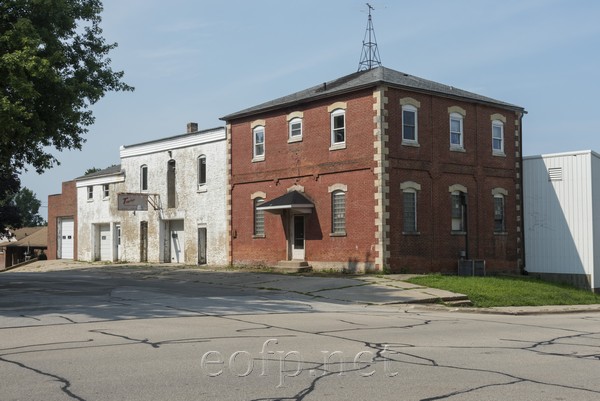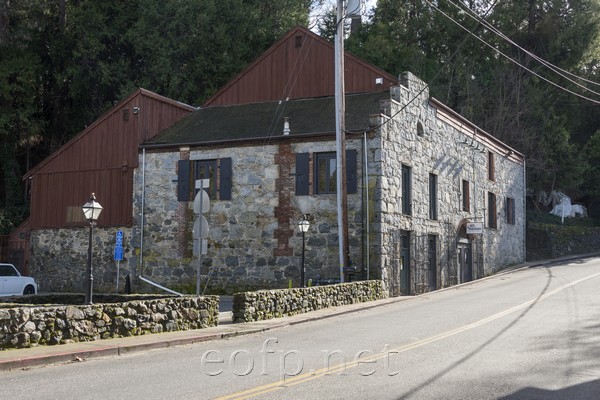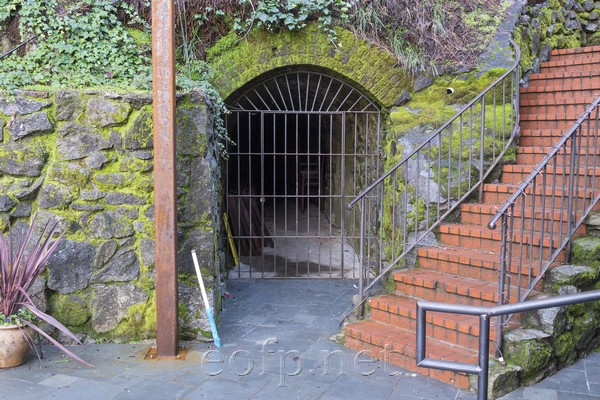Page 2 of 6
Pre-prohibition Brewery Structures
Breweries that produced more than 1,000 barrels per year and less than 10,000 barrels per year occupy a transitional space between the small, ad hoc, pre-industrial brewery and the fully-fledged industrial brewery. Some of the breweries producing in this range were constructed in specialized forms tailored to beer production. Some were housed in general purpose buildings. Breweries in this range rarely had much or any ornamentation. They would not usually have been designed by professional architects or built by specialized contractors. Many breweries producing in this range were housed in single buildings. Some had one or two ancillary buildings. These separate structures might have been a small storage building, a wash house or a small bottling building. Smaller breweries were often transitional, in that they stood for short periods of time while a brewing business either grew or expired. If the brewing business grew, the smaller buildings would be demolished and replaced or incorporated into a larger campus as ancillary buildings. In smaller towns where the local market was insufficient for growth, these smaller breweries remained small until national prohibition.
The pre-imminent scholar of United State brewery architecture, Susan Appel, describes the majority of breweries built in the United States prior to the Civil War as being primitive or built in vernacular styles. Many of the smaller breweries that continued to operate until prohibition fit this description. They were built with locally sourced materials, using general local construction methods. They were not designed or engineered by specialists other than the brewers themselves. Many of these smaller proto-industrial breweries still exist in their entirety or in fragments throughout the country. Fire insurance atlases generally include breweries that produced a thousand or more barrels per year. Sometimes small breweries aren't found on fire insurance atlases because they were open for brief windows of time between publication dates. Smaller breweries in urban areas were often forced to expand or were forced out of business in the late 1800s. Those that expanded demolished or altered the buildings in their campuses. Smaller breweries often had the means to adopt some of the new brewing technologies of the late 1800s such as small refrigeration systems and steam powered equipment. Many of those in small, isolated towns, were able to stay in business until 1919. Some reopened after 1933. A few are still operating. Cold Spring brewery in Minnesota and Straub brewery in St. Marys Pennsylvania, are two examples of surviving small brewery operations.
The Germania brewery in Dryersville Iowa
The Germania brewery produced 1,432 barrels in 1879. The building stopped being used as a brewery in 1880. It currently houses an auto repair shop. It previously housed an electrical contractor.
Nevada City Brewery in Nevada City California
Nevada City Brewery produced 1,250 barrels in 1898. It stopped being used to produce beer as a result of national prohibition in 1920. It currently houses a restaurant.
The Peru Brewery in Peru Indiana
The Peru Brewery produced In 6,500 barrels in 1898. It stopped being used to produce beer in 1908. It was unclear, other than storage, what the building was being used for in 2018.
The Sonoma Brewing Company Brewery, Sonoma California, photo Laura Hedlund
The Sonoma Brewery was built in 1905 and was never included in a brewery survey. It probably produced a few thousand barrels in its best years. It was no longer used to produce beer after 1916. It currently houses a gourmet cheese producer.
Breweries that produced close to or in excess of 10,000 barrels per year required specialized structures and costly industrial equipment. There were 250 breweries producing 10,000 or more barrels per year in 1878-79. This was just before the advent of mechanical refrigeration systems and a number of other technological advances in the 1880s that encouraged consolidation and large-scale production. By 1898, 682 breweries in the US were producing 10,000 barrels per year or more. This increase in large breweries occurred while the total number of breweries fell to 1,715 in 1898 from 2,422 in 1879 and the amount of beer produced in the US increased from 11,103,084 barrels in 1879 to 37,493,306 in 1898. Smaller breweries were being put out of business by new, larger and more efficient operations. Generally speaking, after 1898, breweries that produced less than 10,000 barrels per year were not built. Mentions of new breweries being constructed in brewers' journals after the turn of the century almost always refer to plants capable of producing 30,000 barrels or more per year.
Most of the large industrial breweries of the late 19th century produced lager. Lager beer was introduced in the United States in the 1840s by German immigrants. It became the most popular type of beer in the country after the Civil War. Most scholars of beer history characterize lager as having replaced earlier British ales in American beer culture and production. What I've found is a little more complicated. More ale, for example, was being produced in the US, in 1898 than the total amount of beer produced in the years before and during the Civil War. Lager production had meanwhile had increased to 10 times the amount of beer produced in those years. So, ales weren't exactly replaced. They were definitely relatively overwhelmed by lagers. This is important because ale breweries and lager breweries had somewhat different structural requirements. The most significant differences concerned the lager brewer's need for sustained and controlled cold temperatures. Ale brewing had temperature requirements also but not as much as lager brewing.
Prior to the 1880s, lager breweries had specialized ice houses or caves that were designed to maintain cold fermenting and storage temperatures with natural ice. Ice houses were elaborately designed buildings with thick walls. They were made air tight with pitch and used hollow walls and other building techniques and materials for insulation. Ice was placed in a single location, usually at the top of the interior space and air flow was guided by convection over the ice and through the barrels of fermenting beer. When mechanical refrigeration systems became available in the 1880s, ice houses were either torn down or converted into refrigerated stock houses. When the terrain allowed for it, tunneling was often cheaper than building above ground ice houses. Breweries were often built against the sides of hills or bluffs to facilitate digging cold storage tunnels. The Peru Brewery above almost certainly had lagering tunnels in the hill behind it. The Nevada brewery in Nevada City California has an exposed lagering tunnel seen in the photo below. In many locations natural caves were expanded and used as brewery storage. St. Louis has extensive networks of lagering tunnels beneath its streets today. In many cases, the James River Steam Brewery tunnels in Richmond Virginia being one example, tunnels are the only surviving remnant of breweries. Ale breweries did not need elaborate ice houses or lagering tunnels. But otherwise, ale and lager brewer's facilities requirements were similar. The designs of the breweries however, were sometimes remarkably different.
The Nevada City brewery was built along a creek against a hillside. Breweries were frequently located next to hillsides that could be tunneled into to make cold storage space before the advent of mechanical refrigeration in the 1880s.
Next page: 3
All content on these pages Copyright Mark Hedlund 2012-2019. All rights reserved. Use in school projects and with links on social media is always okay. Please send me an email to request permission for any other use: hedlunch@yahoo.com Non-exclusive commercial publication rights for most photos is $25 per image.





